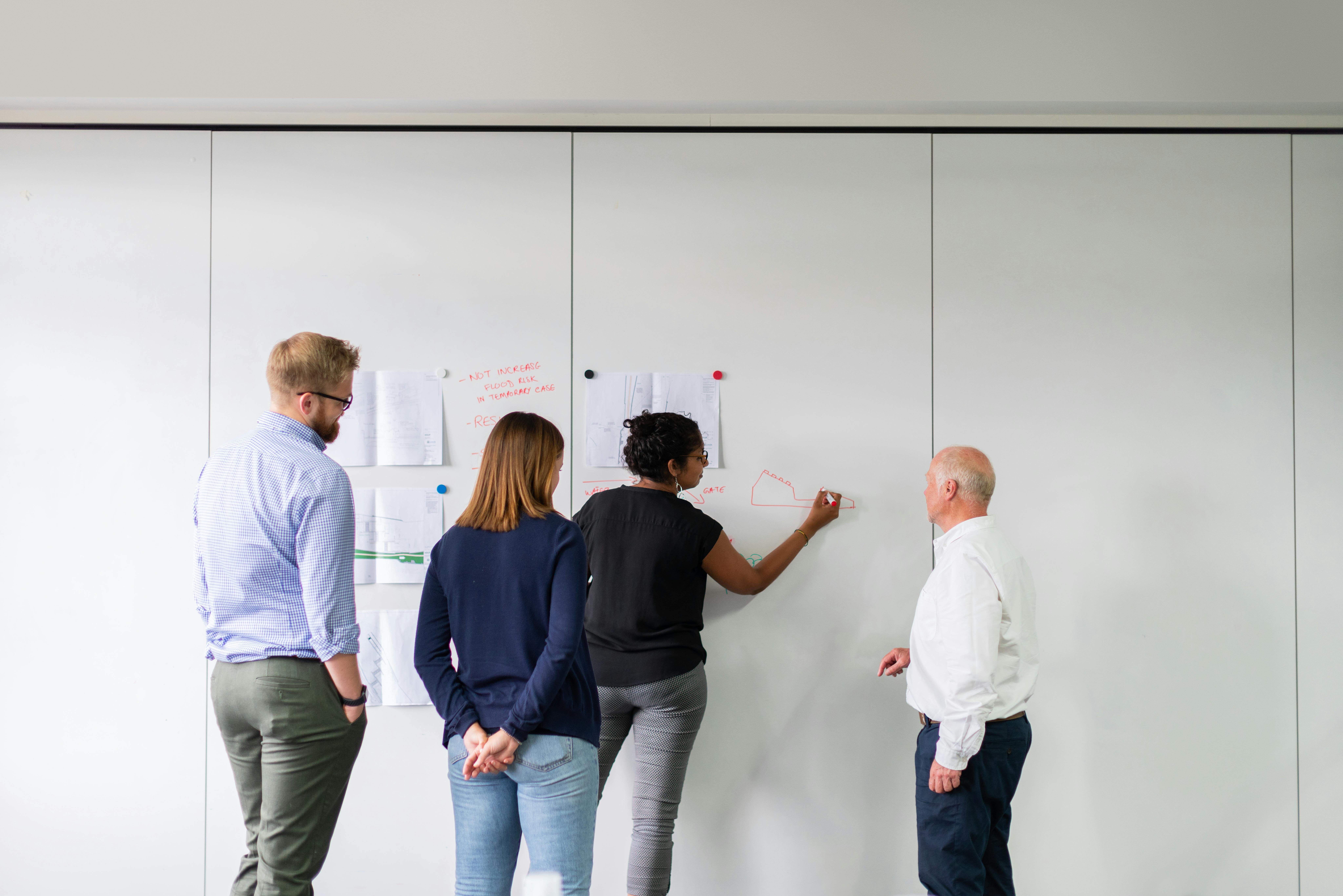News & Blogs
Stay updated with the latest news, insights, and expert blogs from Emixa. Explore industry trends, digital innovations, and company updates all in one place.

- ERP Software
Here are 5 Success Ingredients for Low-Code Projects
How do you make integration and application projects with low-code a success? Many organizations see the opportunities of low-code but are simultaneously apprehensive about the still new and unfamiliar terrain. For that reason, it is challenging to start well. Therefore, here are five ingredients that every low-code project needs to succeed.

- Business Consulting
- AI
Scaling New Business Models: 3 Initial Takeaways
More and more retail brands are embarking on new initiatives, such as refurbishment, subscription services, and usage-based models. Sometimes out of opportunity, but often from necessity. Driven by themes like sustainability, artificial intelligence, big data, and new forms of collaboration, many new business models and service concepts are emerging. These include peer-to-peer, refurbishment, direct-to-consumer sales, and product-as-a-service models —all aimed at creating, delivering, and retaining more value. This is particularly relevant in today’s constantly changing environment.

- IT
- IT Strategy
From Confusion to Confidence: How Peer-to-Peer Training Boosts IT Adoption
Implementing a new IT system, such as an ERP or CRM package, involves more than just technical challenges. End users must adapt to the new system and processes, which can lead to errors, inefficiency, and resistance. At Emixa, we recommend investing in a train-the-trainer approach, where key users are trained to become internal trainers. This investment ensures smoother adoption, builds internal expertise and helps mitigate risks, leading to a successful system implementation. From confusion to confidence.

- SAP
Customization in SAP S/4HANA Thanks to 'Mendix on Top of SAP
SAP has been a major player in the ERP market for years. With the SAP ECC-Business Suite, SAP developers have the ability to add custom software to standard configured business processes.

- Mendix
The Importance of Cloud Migration to Mendix V4
V3 was the trusted cloud environment for Mendix for a long time. In 2017, its successor came into existence, and Mendix Cloud v4 was born. If your application is still hosted in Mendix Cloud v3, it is crucial to migrate to v4 now. This is because Mendix applications running in the v3 of the public Mendix Cloud will no longer be supported from March 2021.

- Siemens
- PLM
- +1
Celebrating Excellence: InMotion Computable Award Nomination
We are proud to announce that this year 'InMotion - Charging Ahead Towards Le Mans e-Racing' has been nominated in the category of Best Educational Projects in ICT. Join us in celebrating this achievement and discover more about the InMotion Team's journey. Vote now!

- Digital Twin
Digital Twin & Thread: From Complexity to Competitive Advantage
The complexity of contemporary product and production processes is increasing explosively. Companies have to deal with customised products, quality, cost reduction, flexibility, sustainability and so on. Complexity is the central theme for all these topics, but how can you turn this complexity into a competitive advantage? Most manufacturing companies know that they need to continuously evaluate and improve the product development process to keep up with the competition. To this end, incremental investments are constantly being made that consciously or unconsciously contribute to a total digital transformation. In previous blogs we have discussed various separate topics in the field of digitisation that are relevant for manufacturers. We have talked about: Breaking down the silos between engineering and production Gaining insight into production processes via simulation models The virtual commissioning of a line or machine The transition from 2D drawings to Model Based Definition Data exchange within the supply chain For all the topics above, they contribute to digitisation within manufacturing. Of course, there are many other important technologies or solutions besides these topics that we will explain in future blogs. This time, our focus is on the overarching theme that ties all these topics together: 'Digital Twins' and the 'Digital Thread.' As we engage with companies about these concepts, we observe a significant increase in manufacturing knowledge over recent years. While only a few years ago, these terms were relatively unfamiliar, it's now apparent that almost everyone has developed their own understanding of them. However, given the varied definitions we frequently encounter, this blog aims to articulate our perspective on these two terms. Digital Twin When we talk about digital twins, we often talk about different variants. For example, you can have a digital twin of your product, but also of your production process. In short, a digital twin for me is the digital counterpart of reality, where all relevant up-to-date information is connected. So when we talk about a digital twin of the product, we don't just mean the 3D CAD file. Although this is of course an important part of the digital twin, that file does not contain all the information. Think of all the requirements and specifications that determine the product, or the performance of the product itself. In our view, a complete digital twin of the product contains simulation models that predict, for example, the rigidity of a product or the air resistance. Of course, the same applies to the digital twin of production. This also includes all the tools, resources, actions, quality controls, programming, etc. required for actual production. Again, simulation models are included that can predict output, guarantee safety and ergonomics on the floor and prevent bottlenecks or collisions with robots and AGVs. The added value of these digital twins includes the fact that everything can be validated and prepared in a virtual environment before a physical product or process is set up. This helps companies bring better products to market faster and at lower cost. Even after the physical products and production processes have been set up, the digital twins offer added value. Most products and processes now contain numerous sensors that collect data on performance. This real-time data can flow back into the digital twins to provide additional insights and implement a process of continuous improvement. However, it is a prerequisite for this that the various applications and departments within companies are well-connected to each other. This brings me to the second term. Digital Thread When we talk about the 'Digital Thread' we mean one integrated stream of data across the different phases of the product development cycle. This means both a connection between the different departments within a company, such as sales, engineering, production and service, but also between the different applications within a company, such as CPQ, PLM, ERP, MES, etc. By connecting all the information, you create a digital thread. This creates traceability in the process. This traceability is becoming increasingly important. Consider the aviation or medical industry, for example. Because traceability ensures that the impact of a change is immediately transparent, and thus prevents mistakes from being made. Does a customer change a requirement halfway through the process? It is then immediately clear which functions and components need to be changed as a result, where they currently are in the process and who is working on them. Thanks to their predictability and traceability, the Digital Twin and Digital Thread can help companies turn increasing complexity into a competitive advantage. Up for a brainstorm? Curious about the other benefits of digital twins and the digital thread? Want to know what digitisation can mean for your business and how we can help you with that? Reach out to us, and we'll gladly provide you with more information.

- Mendix
What is the Role of Low-Code in Manufacturing Menus—and Why Is It Transforming Digital Manufacturing?
In modern manufacturing, digital transformation is no longer a future ambition—it’s a present-day imperative. One of the most powerful yet underutilised tools driving this transformation is low-code development. Combined with the concept of a manufacturing menu, low-code is enabling manufacturers to build flexible, scalable applications that standardise processes, boost agility, and bring innovation to the shopfloor faster than ever before.

- Business Consulting
3 reasons why clear KPI’s can help a Product Owner
The Product Owner role (often given different names but generally the same concept) involves prioritising the product backlog with the right vision to maximise product value. Many organisations interpret this “product” quite broadly, while one of Scrum’s core values is “focus.” Unfortunately, this focus is often lacking, causing a Product Owner to work on various “parts” of a product that should actually be separate products. Therefore, having a clear overview of KPIs can help a Product Owner focus on the aspects of the product that positively contribute to these indicators.